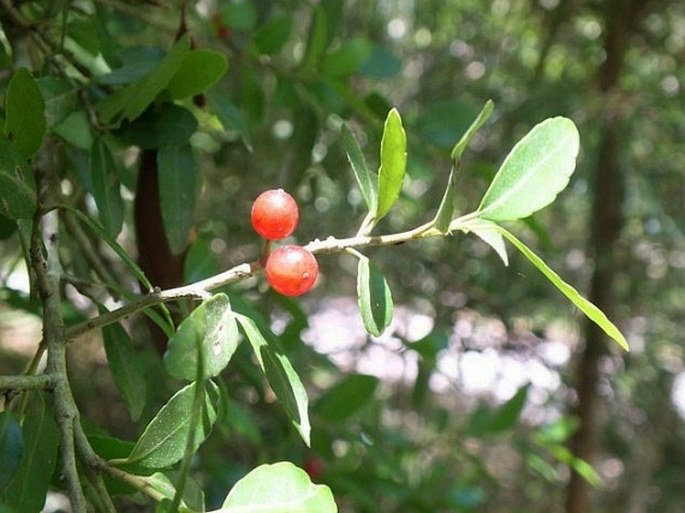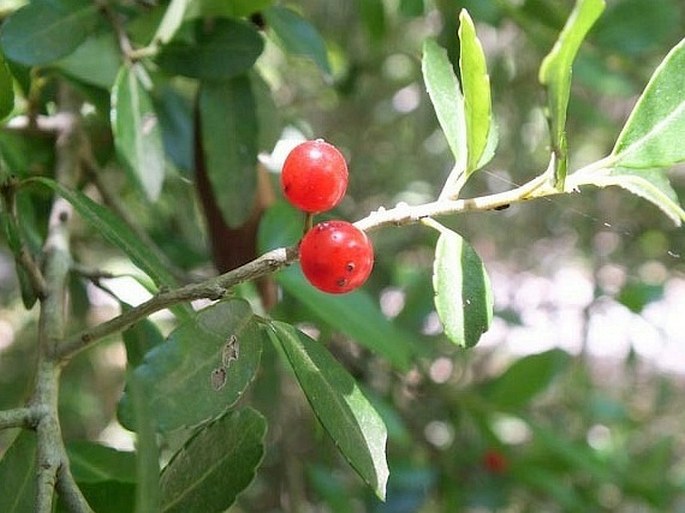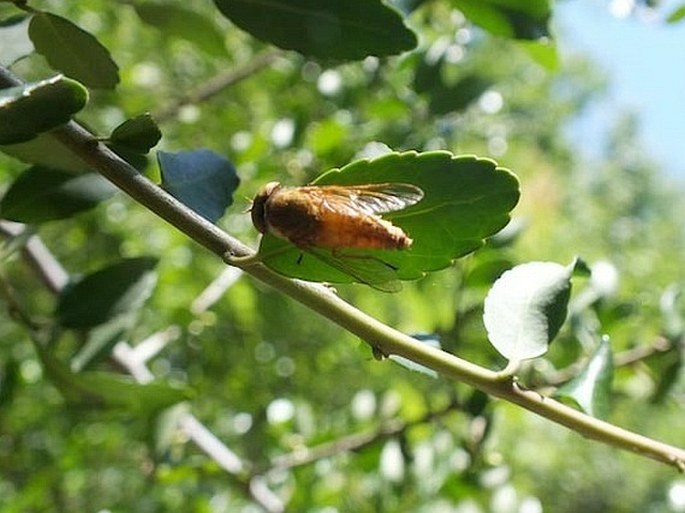Syn.: Ilex ligustrina Jacq.
Family: Aquifoliaceae Bercht. et J. Presl

Distribution: Species of south east of US, from Virginia to Oklahoma and south to Florida and Texas. Also in southern Mexico in states of Chiapas and Veracruz. Naturalized in Bermuda.
Ecology: Occurs in a variety of habitats, from dry hills to swamps to coastal regions. Tolerant of of salty soils and shade. Therefore, often found growing under the trees in open forests. Blooms in early spring.
Description: Evergreen shrub to small tree, dioecious, up to 7 m high, usually multiple trunks. Bark smooth, grey, often mottled with yellowish patches of lichen. Leaves 1–2.5 cm long, alternate, leathery, dark green, glossy, oval shape with crenate margins. Flowers small, white, about 8 mm across, tetramerous, male and female on separate plants, from leaf axils. Fruit is a berry, 8–10 mm, red, rarely yellow, contains 4 seeds, striated. Berries persist through fall and winter.
Note: This is the only plant in North America containing caffeine and as such it was used by native tribes (Indian Tea). The berries induce vomiting (hence ‘vomitoria’).



These images were taken in USA, Louisiana, Fontainebleau State Park (May 2014).


